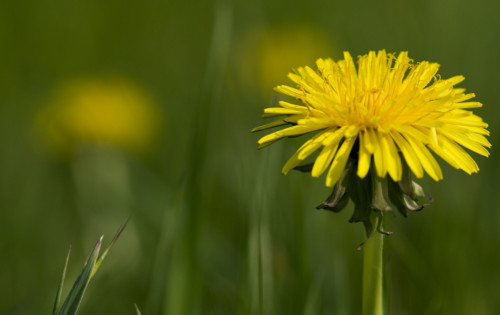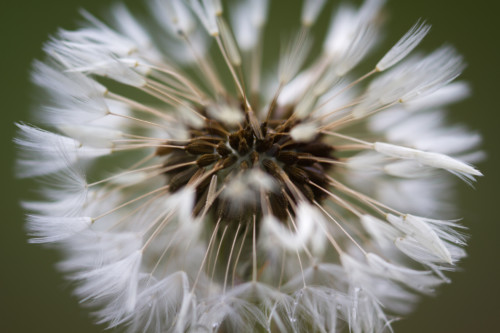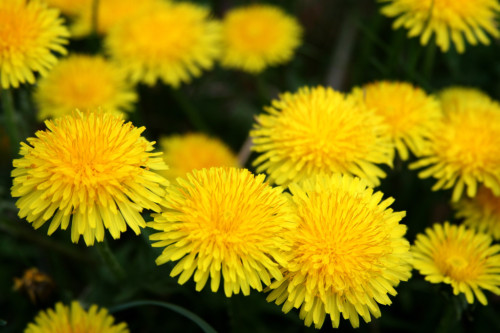Why Dandelions Are a Superfood Powerhouse
The dandelion may be a lawn-lover’s worst nightmare, but to an herbalist, it is the poster child for wild weeds. The health benefits of dandelion greens cannot be overstated.
Over 30 million years old, the dandelion thrives in the face of resistance, growing in poorly nourished environments and greeting passersby through sidewalk cracks with determined force.
Known as a pioneer plant, it is one of the first organisms to grow in harsh overturned soil, using its long taproot to burrow down and break up the ground. In its benevolence, the dandelion offers nutritional support to depleted earth, paving the way for larger species to flourish.
Dandelion’s Latin name, Taraxacum Officinale, literally translates as, “The Official Remedy For Disorders”.
The dandelion’s English name originates from the French “dent de lion”, meaning lion’s tooth, which describes the plant’s tooth shaped leaves. Its Latin name, Taraxacum Officinale, literally translates as, “The Official Remedy For Disorders.”
This ancient medicinal plant was brought to North America by European settlers in the 1600’s but, there’s evidence to suggest that it was used for medicine as early as the 10th or 11th Century by Arab Herbalists.
From the top of its flower to the tip of its root, it is food and medicine. Both the leaves and roots are rich in Vitamin A, B complex, C, K, iron, potassium, zinc, calcium, magnesium, manganese, copper and fiber.
The roots also contain the prebiotic, inulin, an indigestible plant sugar that creates a rich environment for the body’s healthy intestinal micro flora to thrive in. This is nature’s vitamin pill, and the dandelion’s annual spring arrival ushers in the traditional time for herbal blood cleansing regimes that enliven the body after a sluggish hibernation through winter.
In times gone by, the roots would be dug up when the earth thawed and juiced to alleviate the vitamin and mineral deficiencies accrued through the winter months. With its ability to stimulate digestion and support the function of the liver and kidneys, the dandelion aids the body in eliminating toxins and metabolic waste.
The leaves and roots are both considered bitter in flavor, but it’s the root that is more frequently used for this constituent in digestive formulas. Used traditionally for an array of complaints as diverse as the prevention of gallstones and the reduction of high cholesterol, to combating eczema and reducing back pain; dandelion root is one of the most beneficial remedies to use, when a cooling anti inflammatory effect is needed. The leaves direct their energy more towards the kidneys and are most notably used as a diuretic for conditions such as gout and high blood pressure.
While we may be less likely to juice the fresh roots unless guided by an herbalist, it is possible to enjoy the benefits of the root in powdered form added in small amounts (to disguise the bitterness), to sauces or stews, or by drinking the simmered roots in the form of a tea.
One teaspoon of dried dandelion root per 8-oz cup of water simmered on the stove for 20 minutes in a covered pot is the most basic way to enjoy its digestive benefits*. Another favorite way to enjoy dandelion root is to use the roasted root as a coffee substitute. The bitterness is mellowed by the roasting which brings out the sweeter more earthy flavor of the herb and when combined with fellow weedy friend, roasted chicory root, the two herbs create a plausible alternative for the coffee lover who shouldn’t drink coffee!
Faux Coffee
- 1 TBL roasted dandelion root
- 1 TBL roasted chicory root
- 1/2 TBL burdock root (optional)
- 1/2 TSP cinnamon powder
- 1/4 TSP cardamom powder
- 2 cloves
- 4 Black peppercorns
- 1” piece of fresh ginger
- 5 cups of water
Method
- Slice the ginger and add all the above ingredients to a pot of water.
- Simmer the covered pot for 20-30 minutes.
- Finish with a milk of your choice.
- Keep in the fridge for up to 5 days.
Moving away from the root, it’s far easier to find edible uses for the dandelion greens, stems and flowers. The leaves make a great addition to pesto and soups and are delicious when sautéed. The flowers are transformed into fritters, syrups and pancakes.
A more medicinal way to extract the nutrient benefits of the dandelion leaves is by making a herbal vinegar. Vinegar has the ability to extract minerals and vitamins and is often used as a medium by herbalists to create daily tonics that can be used to replace the basic condiment.
Mineral-Rich Dandelion Vinegar
- Fresh dandelion leaves
- Raw apple cider vinegar
- Mason jar with plastic lid (Metal lid will corrode due to the acidity!)
Method
- Chop up the fresh leaves.
- Loosely pack into the jar.
- Cover with raw apple cider vinegar by an inch above the level of the leaves.
- Close jar with a plastic lid.
- Shake every other day and strain the leaves out after 4-6 weeks.
To Use
Use in place of plain apple cider vinegar for a tonic dose of the herb. Store in the fridge. Use within 6 months.
The dandelion illuminates the roadside with its sunny bloom and reminds us how to stay resilient with its indestructible presence. Rudolph Steiner described the dandelion as “a messenger from heaven” and since its one of our most tenacious weeds, it feels right to befriend this golden bloom and appreciate it for all its healing powers and nutritional support.
Article Notes
* Dandelion root is energetically drying and cooling in nature. To counteract the effects of this, blend the herb with more moistening plants like equal parts of burdock root or a pinch of licorice root.
** Licorice root in high doses may raise blood pressure.
*** Dandelion greens contain vitamin K. If taking blood thinners, check with your doctor first before adding these wild greens to your diet.
Dawn Petter is a practicing herbalist living and working in New York City. She is the founder of Petalune Herbals, and more information on her workshops and class offerings can be found here.





































